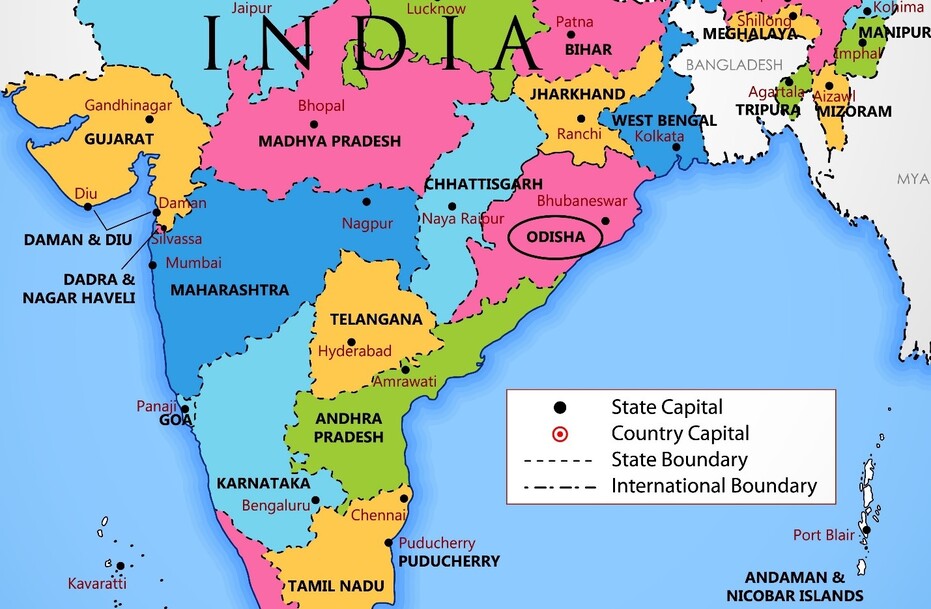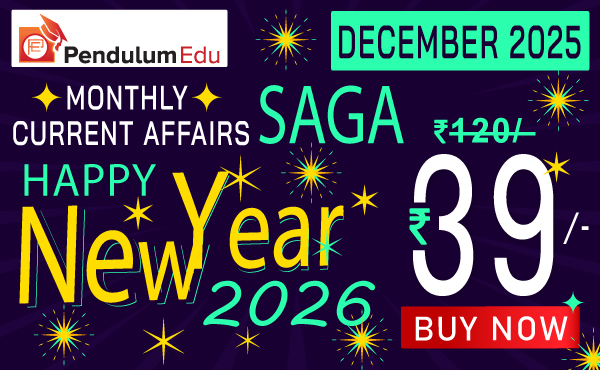Daily Current Affairs and GK | 10 April 2020

Happy New Year get 35% Off
Use Coupon code NY2026
1. Central Government approved a package of Rs 15,000 crore against the COVID-19 pandemic
- Recently, the Central Government has approved a package of Rs 15,000 crore for dealing with emergencies caused by the COVID-19 pandemic and for the preparation of health facilities.
- This amount will be spent in two phases. Out of this, Rs 7,774 crore will be used immediately to deal with the contingency arising out of the pandemic, while the remaining amount will be used in the next one to four years under mission mode.
- The main objective of this package will be for the development of screening systems in the country, establishment of dedicated treatment centers, centralized procurement of medical equipment and medicines required for the treatment of infected patients, so as to reduce the spread of coronavirus.
- The package also aims to strengthen the health system at the national and state level to assist in the prevention and preparedness of future outbreaks of the COVID-19 pandemic.
- To achieve this objective, the establishment of laboratories, promotion of surveillance activities, biosecurity preparedness, research on pandemics and risk communication activities will be improved with special attention.
2. CIL allowed the use of letter of credit facility to consumers of electricity and non-power sector
- Recently Coal India Limited (CIL) has given permission to consumers of electricity and non-power sectors to use the letter of credit.
- Coal India Limited supplies 80% of the coal to the power sector consumers and 550 million tonnes of coal will be supplied to the power sector in the current year 2020-21.
- This decision has been taken to provide relief to consumers of the power sector and to increase liquidity in the system.
- It is known that CIL has already allowed letter of credit facility to consumers of power sector instead of cash advance for fuel supply agreements for payment of coal.
- CIL has also introduced the same arrangement for non-power sector customers in April 2020. This will boost liquidity in the markets and at the same time, it will be a relief for coal consumers.
- Coal India Limited (CIL):
- Coal India Limited is a coal mining and refinery company owned by the government of India.
- It is the world's largest coal producer. This Maharatna PSU accounts for about 82% of the coal production in India.
- It is headquartered in Kolkata, West Bengal.
3. April 9: Shaurya Divas of the Central Reserve Police Force
- The gallantry day of the Central Reserve Police Force is observed every year on 9 April.
- On this occasion, President Ram Nath Kovind, Prime Minister Narendra Modi and Home Minister Amit Shah congratulated the CRPF personnel.
- On 9 April 1965, a small contingent of the Central Reserve Police Force made history by foiling the attack of a large contingent of the enemy country on the Sardar post in the Rann of Kutch in Gujarat.
- Shaurya Divas is a symbol of that day's indomitable courage, bravery and sacrifice.
- Central Reserve Police Force (CRPF):
- The Central Reserve Police Force is the largest Central Armed Police Force in India. It functions under the authority of the Ministry of Home Affairs, Government of India.
- It was established on 27 July 1939.
- It is headquartered in New Delhi.
- Its motto is 'Service and Loyalty'.
4. OPCW accuses Syria of using chemical weapons
- Recently a report by the Organization for the Prohibition of Chemical Weapons (OPCW) has come out.
- In this report, the OPCW has accused Syria of using Sarin and Chlorine on its own citizens.
- Western countries have condemned Syria after the report was released.
- Organization for the Prohibition of Chemical Weapons (OPCW):
- It is an intergovernmental organization, the body implemented under the Chemical Weapons Convention.
- It was founded on 29 April 1997.
- Its headquarters are located in The Hague, Netherlands.
- Its Director-General is Fernando Arias.
- OPCW won the Nobel Prize for Peace in 2013 for its work in Syria.
- It has eliminated 97% of the world's chemical weapons.
5. Delhi government launched Operation Shield against COVID-19
- Recently the Delhi government has launched Operation Shield against COVID-19.
- Delhi Chief Minister Arvind Kejriwal had also announced a 5-T plan to prevent COVID-19 from spreading.
- Operation Shield (SHIELD):
- S - Sealing the area immediately.
- H - Quarantining everyone's home in this area.
- I - Isolation and tracing of people who have come in contact with an infected person.
- E - Doorstep delivery of essential goods.
- L - To disinfect those areas.
- D - Doing door-to-door testing, so that people with symptoms of COVID-19 vary and can be tested after taking samples.
6. Odisha government extended the lockdown period in the state till 30 April 2020
- Recently the Odisha government has extended the lockdown period to 30 April 2020 due to rising cases of COVID-19 in the state.
- This lockdown period was going to end on 15 April.
- Odisha has become the first state in the country to do so.
- Along with this, educational institutions in Odisha will remain closed till June 17.
- So far 44 people have been infected with COVID-19 in Odisha, while one person has died.
- Apart from this, the state government has made it mandatory for all people to wear masks while going out of the house.
- Odisha:
- It is a state on the Bay of Bengal in the east of India.
- It is known for its tribal cultures and many ancient Hindu temples.
- Its capital is Bhubaneswar.
- The Konark Sun Temple, Jagannath Temple and Puri Temple are famous here. The Lingaraja temple complex located in Bhubaneswar, dating to the 11th century, is located around the sacred Bindusagar Lake.
- The chief minister is Naveen Patnaik and Governor Ganeshi Lal.
- The state bird of Odisha is the Blue Jay or Indian roller and state animal sambar, while the state tree is the banyan and the state flower lotus. (Source: ENVIS RP on Forestry and Forest Related Livelihoods)

7. Iraq's President Barham Saleh nominated Mustafa Kadhemi as Prime Minister of the country
- Recently, Iraq's President Barham Saleh nominated Mustafa Kadhemi as the country's third Prime Minister this year.
- Intelligence chief 53-year-old Kadhemi is going to take command at a time when Iraq is going through a challenging phase.
- Iraq currently faces two major challenges - low oil prices worldwide and Novel Coronavirus infection.
- Due to this, there is a budget crisis in front of Iraq.
- Kadhemi has more support from both previously nominated Prime Ministers.
- Iraq:
- It is a country in Western Asia.
- It is bordered by Turkey to the north, Iran to the east, Kuwait to the southeast, Saudi Arabia to the south, Jordan to the southwest, and Syria to the west.
- Its capital is Baghdad and the currency is the Iraqi dinar.

8. April 10: World Homoeopathy Day
- World Homoeopathy Day is observed every year on 10 April.
- The day is celebrated in honor of the birth of Dr. Samuel Hahnemann, the father of the homoeopathy system of medicine.
- Hahnemann, born in Paris, France, was a German physician.
- This year, the official theme set by the Ministry of AYUSH for World Homoeopathy Day 2020- "Enhancing the scope of Homoeopathy in Public Health"
- Homoeopathy- It is a method of medicine that is based on the idea that the body has the ability to heal itself.
Topic of the Day- “Periodic Table”
The periodic table is a tabular representation of chemical elements in which elements are arranged on the basis of atomic number, electron configuration and recurring chemical properties. The structure of the table shows the periodic trend.
In 1869, the Russian chemist Dmitry Mendeleev started the development of the periodic table in which chemical elements were arranged by atomic mass. He left a blank space for him in the periodic table keeping in mind the discovery of other elements in the future. Many new elements have now been arranged in these places.
Features of the Periodic Table:
- Elements are arranged in a table based on the number of protons in a given element and other properties.
- The table has seven rows (periods) and 18 columns (groups).
- Elements in the same group share the same properties. The number of atomic orbitals in the same period is the same.
- Most of the elements in the table are metals divided into six broad categories - alkali metals, alkaline earths, basic metals, transition metals, lanthanides and actinides. They are located on the left side in the table, which are separated from non-metals by a zig-zag line on the right.
- Moving from left to right in the periodic table, the atomic radius and metallic properties of elements decrease, while ionization energy, electronegativity, electron stability increase.
- Similarly, moving from top to bottom in the table, the atomic radius and metallic properties increase, and the ionization energy, electronegativity, electron stability decrease.
- Lanthanides and actinides, often called internal transition metals, are usually arranged as a separate section under the main table.
Some other features of the table:
- To celebrate the 150th anniversary of the organization of the Periodic Table recently, UNESCO declared 2019 as the International Year of the Periodic Table.
- There are 118 elements in the periodic table. 90 of them are found in nature and others are man-made. Technetium was the first man-made element.
- Hydrogen is the lightest element with its atomic weight. Uranium is the heaviest element with an atomic weight of 238.
- Helium, neon, argon, krypton, xenon, and radon are known as noble gases because they were considered inaccessible. But recent studies have also discovered reactive compounds of xenon, krypton, and radon.
- The International Union of Pure and Applied Chemistry (IUPAC) is responsible for maintaining the periodic table.
- Most elements of the periodic table are metals.
- The various forms of pure elements are called allotropes. For example, diamond and graphite are allotropes of carbon.
- There are only two elements that are liquid at room temperature- Mercury and Bromine.
Multiple Choice Questions (MCQs)
1. The Central Government has approved a package of how much amount against the COVID-19 pandemic?
A. 12,000 crore
B. 13,000 crores
C. 15,000 crores
D. 18,000 crores
2. Where is the headquarters of Coal India Limited located?
A. Kolkata
B. Ranchi
C. Patna
D. Raipur
3. In which year was the Central Reserve Police Force established?
A. 1952
B. 1947
C. 1939
D. 1950
4. What is correct regarding Organization for the Prohibition of Chemical Weapons (OPCW)?
A. It is an intergovernmental organization.
B. Its headquarters is located in The Hague.
C. It is an institution awarded with the Nobel Prize.
D. All of the above
5. Recently which government launched Operation Shield against COVID-19?
A. Delhi
B. West Bengal
C. Rajasthan
D. Kerala
6. In which state is the Konark Sun Temple located?
A. Uttar Pradesh
B. Odisha
C. Karnataka
D. Bihar
7. Which of these countries does not share the border with Iraq?
A. Kuwait
B. Turkey
C. Afghanistan
D. Syria
8. On which day is World Homoeopathy Day celebrated?
A. 9 April
B. 10 April
C. 11 April
D. 12 April
Solution:
1. C
2. A
3. C
4. D
5. A
6. B
7. C
8. B





 9 April 2020 Current Affairs
9 April 2020 Current Affairs 








Comments